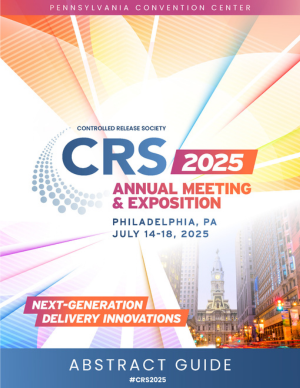Imaging in Drug Delivery
Tech Session V: Imaging in Drug Delivery
Imaging drug delivery – what can we learn from clinical experiences?
Thursday, July 17, 2025
10:04 AM - 10:29 AM EDT
Location: 125
Drug delivery in tumor lesions in the patient is an understudied topic as it entails either invasive procedures such as biopsies or complex investigations such as labeling drugs to be visualized with positron emission tomography (PET) or magnetic resonance imaging (MRI). Biopsies will give limited information as a biopsy in general represents <1% of a tumor lesion and will not give information on other (metastatic) lesions. Thus, whole body techniques such as PET can fill this gap. Tumor uptake of untargeted drugs and understanding (saturation of) tumor targeting of new drugs can be studied by including imaging of the labeled drug in clinical phase 1 trials. This will ultimately support rational decision-making regarding dosing as well as continuation of drug development. We have shown that immuno-PET provides a non-invasive technique to quantify uptake of untargeted nanoparticles (Miedema et al 2022) as well as dose-dependent uptake of mAb in normal tissues and discriminate between non-specific and specific, target-mediated uptake (Jauw et al 2019; Miedema et al 2023). We also demonstrated for tumor lesions dose-dependent inhibition of 89Zr–labeled mAb tumor uptake by increasing unlabeled mAb confirming target engagement of mAb to its receptor in the patient (Menke et al 2019, Miedema et al 2023). Examples of the current advances achieved within clinical studies will be discussed.

Willemien Menke, MD PhD (she/her/hers)
Medical Oncologist , Professor
AmsterdamUMC
Amsterdam, Netherlands

